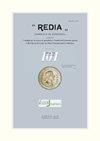昆虫病原线虫对三种软蚧虫的毒力
IF 0.6
4区 生物学
Q3 ZOOLOGY
引用次数: 1
摘要
对昆虫病原线虫(EPN)Steinerma carpocapsae(Weiser)、Steinernama feltiae Filipjev和异横纹肌炎噬菌体phora Poinar(Rhabditidae:Steinermatidae,Heterorrhabditidae)的商业菌株的毒力进行了测试,在柠檬蚧规模上测试了山葵(Bouché)和拟木兰球虫(Kuwana)(半翅目,球虫科)以及一株H.bacteriophora的本地菌株,即假木兰球虫。实验室测试是在小型塑料培养皿中进行的,感染幼体(IJ)用滤纸覆盖在底部。结果表明,所测EPN对三种软蚧均有毒力。在所测试的线虫和介壳虫物种的所有组合中,记录的昆虫死亡率在最高浓度约50 IJ/cm2时超过64%。在相同的线虫浓度下,所有线虫物种的P.corni、S.carpocapsae(Nemastar)的P.绣球花和原生H.bacteriophora菌株的C.pseudomonylarum的鳞片死亡率均在90%及以上。所有鳞片物种都是所有线虫物种的良好宿主。这是第一份寄生在软鳞昆虫身上的EPN报告,也是Coccoidea中为数不多的报告之一。记录的寄生水平有望用于管理介壳虫。本文章由计算机程序翻译,如有差异,请以英文原文为准。
VIRULENCE OF ENTOMOPATHOGENIC NEMATODES TO THREE SOFT SCALE INSECT SPECIES
Virulence of commercial strains of entomopathogenic nematode (EPN) Steinernema carpocapsae (Weiser), Steinernema feltiae Filipjev and Heterorhabditis bacteriophora Poinar (Rhabditida: Steinernematidae, Heterorhabditidae), were tested on young females of Pulvinaria hydrangeae Steinweden, Partenolecanium corni (Bouché) and Coccus pseudomagnoliarum (Kuwana) (Hemiptera, Coccidae) and a native strain of H. bacteriophora was tested on citricola scale, C. pseudomagnoliarum. The laboratory tests were carried out in small plastic Petri dishes with infective juveniles (IJ) applied on filter paper covering the bottom. Results showed that all EPN tested were virulent to all three soft scale insect species. Recorded mortality of insects at the highest concentration of approximately 50 IJ per cm2 exceeded 64% in all combinations of nematode and scale species tested. Within the same nematode concentration, scales’ mortality of 90% and above was recorded for P. corni with all nematode species, P. hydrangeae with S. carpocapsae (Nemastar) and C. pseudomagnoliarum with native H. bacteriophora strain. All scale species were good hosts for all nematode species. This is the first report of EPNs to parasitize soft scale insects and one of the few among Coccoidea. The level of parasitism recorded is promising for potential use in management of scale insects.
求助全文
通过发布文献求助,成功后即可免费获取论文全文。
去求助
来源期刊

Redia-Giornale Di Zoologia
ZOOLOGY-
CiteScore
1.20
自引率
20.00%
发文量
18
审稿时长
>12 weeks
期刊介绍:
Redia supports its long history of basic and applied research in entomology and invertebrate zoology in the field of crop and forest tree protection responding at the same time to the increasing need of innovation and technological improvement.
 求助内容:
求助内容: 应助结果提醒方式:
应助结果提醒方式:


